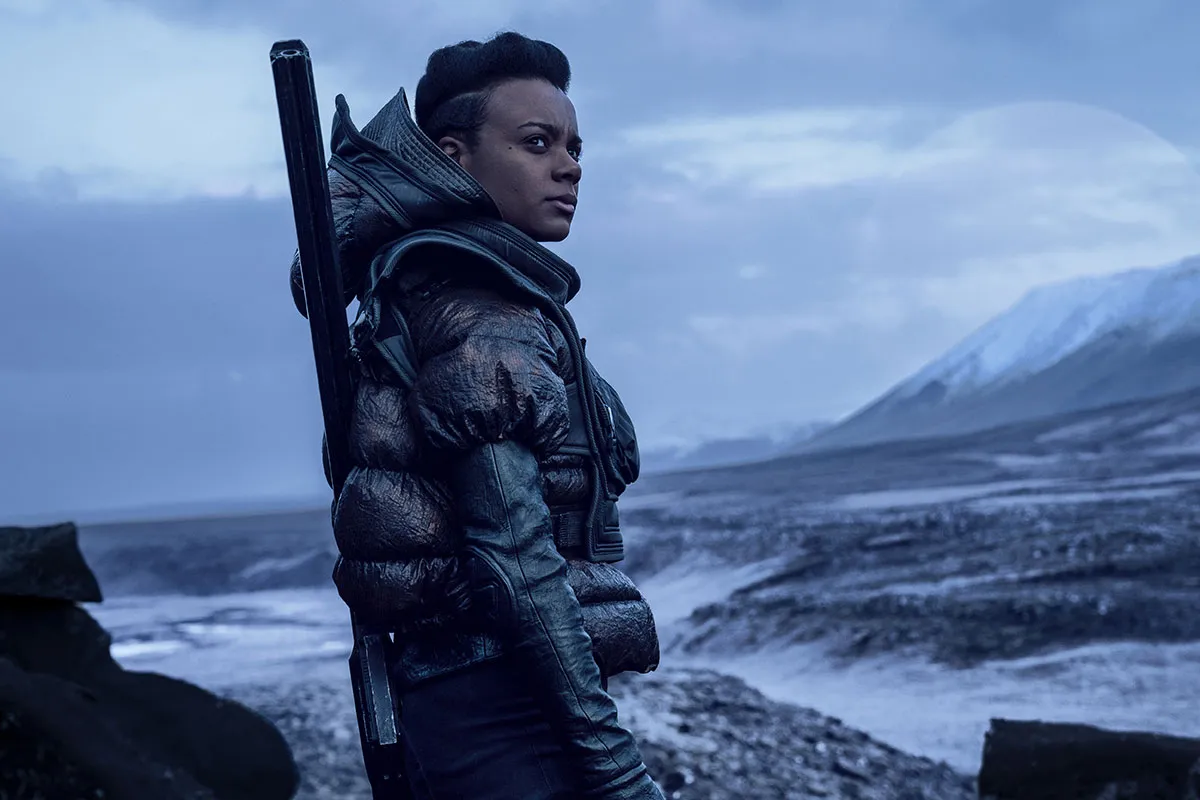The prophetic art of Mystic Meg is taken to extremes in new science fiction show Foundation, Apple TV+’s long-awaited adaptation of one of Isaac Asimov’s most famous stories. It is based around the idea of psychohistory, a fictional science which uses history, sociology and mathematics to predict the future of large populations.
But instead of using it to play the lottery, its inventor (a genius called Hari Seldon) uses psychohistory to predict that the galactic empire he is living under will collapse within 300 years –prompting him to put in motion plans to grow a new one.
Asimov modelled psychohistory on the kinetic theory of gases, where it’s difficult to predict the behaviour of a single molecule in a gas, but easier to predict the movements of a large collective. Throughout his series of books, it is used to forecast –with alarming accuracy –the comings of various Seldon Crises, often taking the form of war, political upheaval or systemic inertia.
It is an idea with obvious similarities to real-life fields of futurism, but how similar is it? Tom Cheesewright, a futurist who has advised companies such as Facebook and Google, doesn’t predict psychohistory becoming a reality any time soon.
“If everyone's behaviour was predictable, you could calculate the future based on where we are at any time,” he says. “It would be like lining up a trick shot in snooker with seven billion balls in a row. It would be incredibly complicated and need more computing power than we probably have today, but ultimately you could calculate the outcome.
"However, we're not like snooker balls. Our behaviour might be different on any given day – influenced by what we ate, or how well we slept – by factors that are not just complex but incalculable. We cannot calculate the future with that much certainty.”
Read more about the future:
- In the future, you'll share your work with robots... unless you're a woman
- Future technology: 22 ideas about to change our world
- The future of food: What we’ll eat in 2028
Cheesewright adds that Asimov’s theory is even more unworkable now than it was in the 1940s and 50s, thanks to technology fragmenting society into myriads of tribes. “Large groups seem to be getting smaller,” he says, “and it has made social trend analysis harder. You talk to a teenager now and say, ‘who are the two tribes in your school’ and they'll just look at you blankly.”
He also touches upon an issue explored in Foundation itself: if a population gains knowledge of the future, will their behaviour change enough to thwart the coming of that future? “The more robust your prediction, the more attention people pay to it, the more effect your predictions are going to have on the future. And that feels like an unsolvable conundrum to me.”
Rather than deal in deterministic prophecy like psychohistory, futurists like Cheesewright tend to deal more in analysis and probabilities. “One big company rang me up and said ‘we've had eight consecutive record years and then everything fell apart. We didn't see it coming. Can you help us make sure we see it coming next time?’”
Cheesewright will then look at the intersection between “existing pressures and incoming trends”, along with analysing data and interviewing people at every level of the industry, before preparing a variety of probable futures and solutions. “It’s mostly about recognising patterns and convincing people of things that they don’t want to believe in.”
Unsurprisingly, the further in the future you go, the more unstable predictions become. “The ‘what’ is usually straight forward,” Cheesewright explains. “But the further you look into the future, it’s the ‘when’ that gets harder.”
He uses the possibility of automation eliminating a large percentage of jobs within the next 50 years as an example. “Will we do it? Yes, I think so. How fast will we do it? Well, that’s a very different question. Will we do it so slowly that we find either an alternative economic model or create a whole new range of industries we can’t even envision yet? Or will we do it relatively quickly and cause rapid disruption to employment? Both remain possible.”

The obvious question for any futurist of course is what their big predictions for the future are. “The most misunderstood one is the shift into the metaverse,” he says, referring to the idea that the virtual and physical worlds will eventually blur. “It is not us living in virtual reality. It’s you being able to have your avatar being visible to people as you walk down the street. That’s undoubtedly coming.
"In the longer term there’s also self-driving cars. That’s going to happen, but the idea of a truly autonomous vehicle that can pick you up and whisk you off to your destination is much further out than people think.”
And then, of course, there’s Earth’s very own Seldon Crisis: the looming spectre of climate change.
“I’ve done quite a lot of work on the future of food in the last few years and the impact of climate change on that,” says Cheesewright. “If we get some of the predicted impacts on rainfall, for example, we will get large parts of the wheat-growing regions suddenly subjected to either drought or flood and in some cases both.
"So suddenly, wheat gets much more expensive. All your classic staples in terms of pasta, bread, pizza, which have been cheap, suddenly start to become quite expensive. Are there other alternative grains? Are we going to shift to different growing regions? There are all sorts of interesting possibilities there.”
About our expert, Tom Cheesewright
Tom is a futurist with experience in broadcasting, writing and speaking on the subject. He has appeared on TV and radio across the BBC, Channel 4, 5, and Sky News, and he has consulted for Facebook and Google.
Read more fromPopcorn Science: